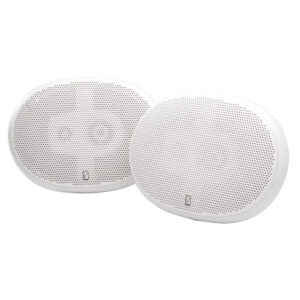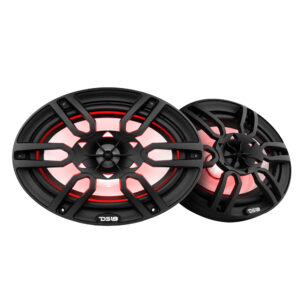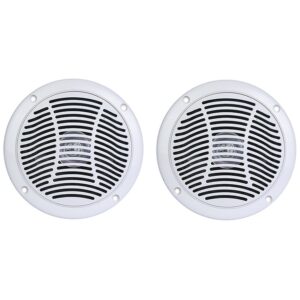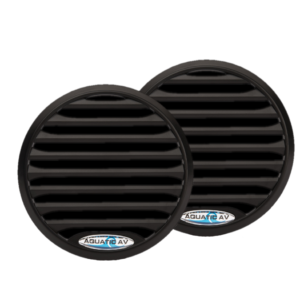If you’ve browsed our website a little bit you may have noticed some labels on the speakers that can be a little confusing. In this video I’ll explain the basic types of speakers and how they compare to one another.
Speakers Have Limited Frequency Response
First, it’s important to understand that it is difficult for one speaker to recreate all the sound frequencies necessary for a faithful reproduction of music. Unlike, say, a human voice which uses very few frequencies by comparison, music has everything from the crisp tinkle of the high hat all the way down to the low thump of a heavy bass drum.
Depending on its size, a speaker will have a relatively narrow range of frequencies that it is good at reproducing. Technologies have been created to compensate for this lack of frequency range.
Dual Cone Speakers
A dual cone speaker has one driver that pushes the sound through two different cones that are attached to it. The larger one handles the lower frequencies, and the smaller cone handles the higher frequencies. This works pretty well but the sound quality is not as good as other types of speakers. Dual cone speakers do tend to be less expensive, though, which is something to consider.
Coaxial Speakers
Coaxial speakers actually consist of more than one speaker working together. The term coaxial refers to the fact that you have one speaker wrapped around another. A typical two-way coaxial speaker will have a woofer with a tweeter in the center. The tweeter handles the higher frequencies while the woofer handles the lower frequencies. The tweeter and woofer each have their own driver which makes for superior sound reproduction compared to dual cone speakers. You may also come across a 3-way coaxial speaker which consists of a tweeter and two woofers. The smaller woofer handles the midrange frequencies while the larger one handles the bass.
You can find very high-quality coaxial speakers, but there is still a small problem with them. Mounting a tweeter in the middle of a woofer can create what we call cross phase distortion. Basically, the vibrations of the speakers can interfere with each other since they are attached. Don’t get me wrong, this isn’t something that is obvious to the average person. It takes a trained ear to detect it.
Component Speakers
Component speakers reduce cross phase distortion by completely separating the tweeter from the woofer. Since they aren’t directly attached there is less opportunity for any interference. Most box speakers are component type speakers. If you look closely at a box speaker you can usually see the tweeter mounted at one end of the box and the woofer at the other end. There are flush mount type component speakers also where the tweeter is mounted in a separate area from the woofer.
Subwoofers
The last type of speaker you will see is a subwoofer. A subwoofer will only handle very low frequencies. You would never want to use a subwoofer by itself because it will sound like mud. You need something that can reproduce higher frequencies to go with it. Check out our other videos for more information on using a subwoofer with your system.




